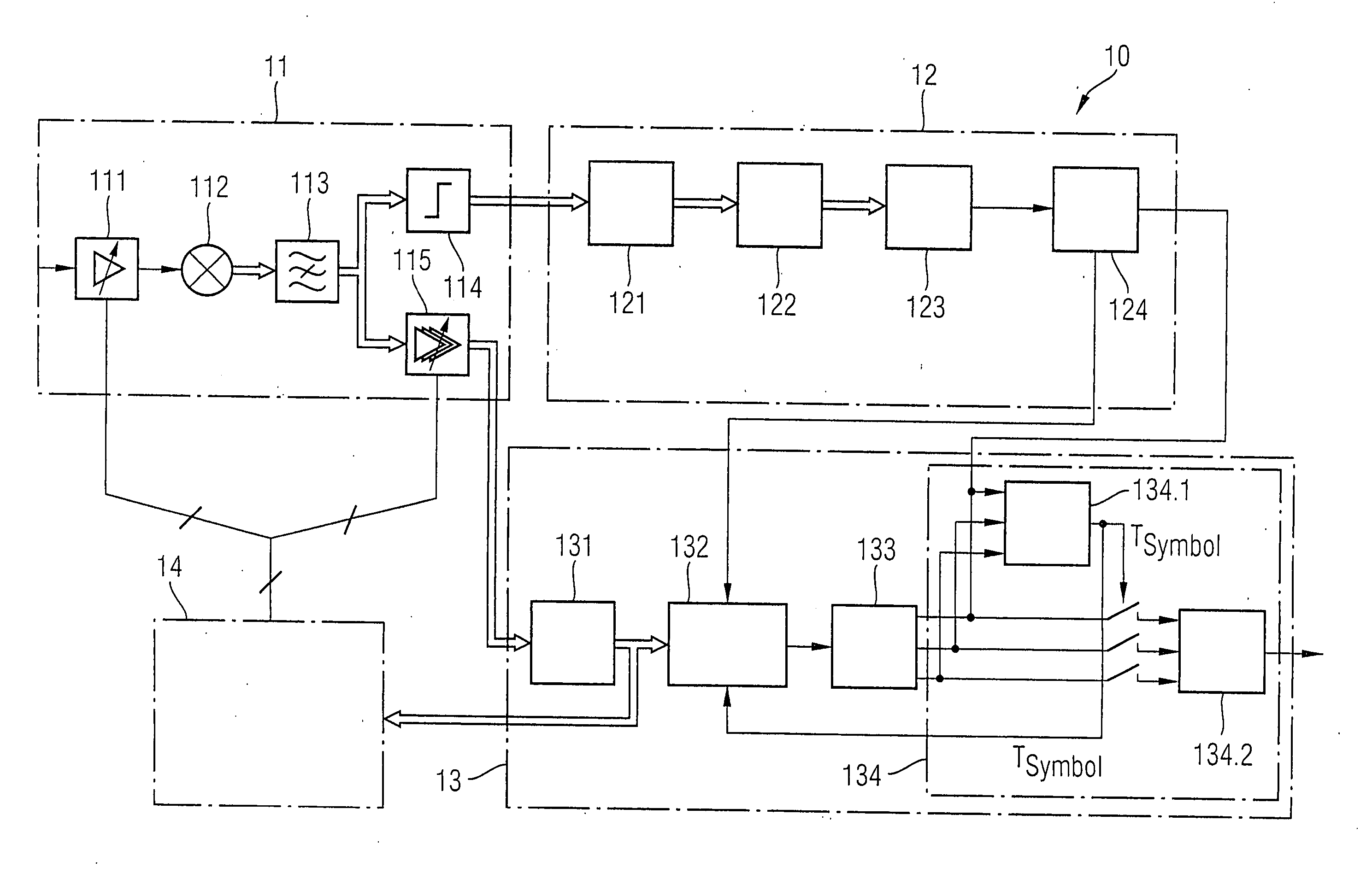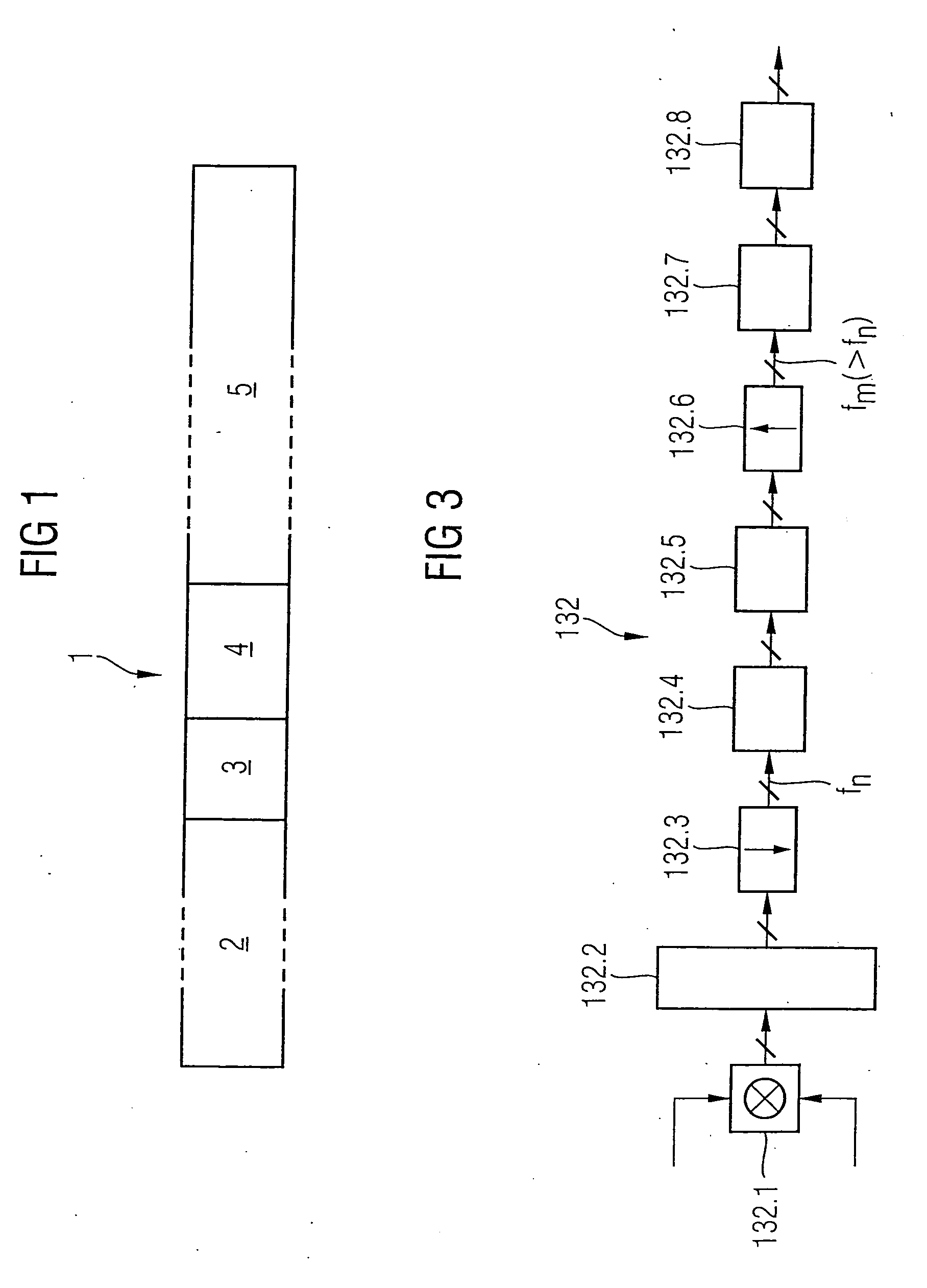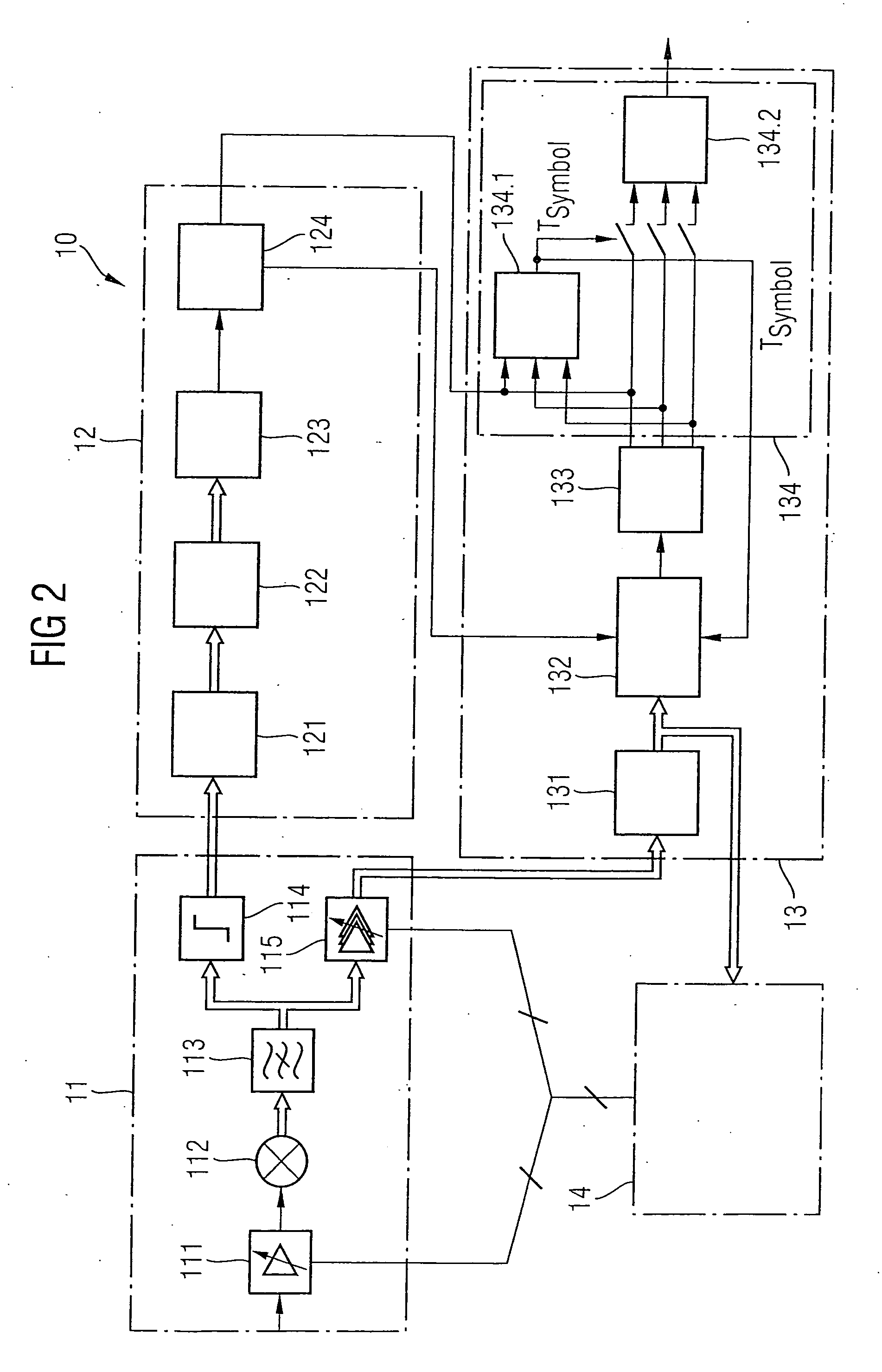Radio receiver for the reception of data bursts which are modulated with two modulation types
a radio receiver and data burst technology, applied in the field of radio receivers, can solve the problems of high power consumption than a pure gfsk receiver would require, and achieve the effects of less implementation complexity, less power consumption, and reduced reception quality
- Summary
- Abstract
- Description
- Claims
- Application Information
AI Technical Summary
Benefits of technology
Problems solved by technology
Method used
Image
Examples
Embodiment Construction
[0030]FIG. 1 shows, schematically, a data burst 1 in accordance with the “Bluetooth Enhanced Data Rate” Standard. This example Standard allows the modulation type to be changed within the data burst. The start 2 of the data burst, which comprises the preamble and the access code, is always modulated using the GFSK modulation method. A change can then be made to the M-DPSK linear modulation method (with multiple value symbols M=4 or 8). This change takes place during a so-called guard interval 3, during which no data transmission takes place. A synchronization sequence 4 and the payload data 5 are transmitted after the guard interval 3.
[0031] As one exemplary embodiment of the radio receiver according to the invention, FIG. 2 illustrates a radio receiver 10 which can be used to receive the data burst 1 as shown in FIG. 1. The radio receiver 10 comprises an analogue front-end stage 11, a GFSK receiving section 12, an M-DPSK receiving section 13 and a digital control unit 14.
[0032] T...
PUM
 Login to View More
Login to View More Abstract
Description
Claims
Application Information
 Login to View More
Login to View More - R&D
- Intellectual Property
- Life Sciences
- Materials
- Tech Scout
- Unparalleled Data Quality
- Higher Quality Content
- 60% Fewer Hallucinations
Browse by: Latest US Patents, China's latest patents, Technical Efficacy Thesaurus, Application Domain, Technology Topic, Popular Technical Reports.
© 2025 PatSnap. All rights reserved.Legal|Privacy policy|Modern Slavery Act Transparency Statement|Sitemap|About US| Contact US: help@patsnap.com



